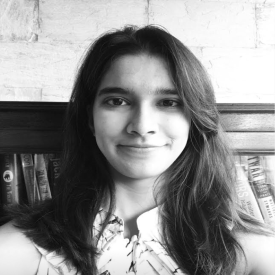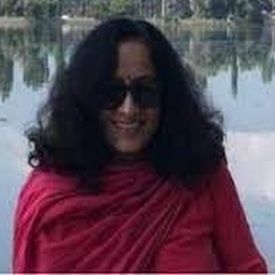India’s Women’s Reservation Act: A big win for governance and beyond
Amidst debates about the recently passed women's reservation act and whether it will reduce gender disparities on the ground, Wattal and Gopalan summarise evidence from a number of randomised evaluati...
-
 Akshara Gopalan
Akshara Gopalan  Urvashi Wattal
Urvashi Wattal  15 December, 2023
15 December, 2023
- Perspectives
The distributional consequences of political reservations
This article identifies and attempts to fill in the gaps in understanding the effects of reservations for Scheduled Castes (SCs) in Panchayats. Using data from a state-wide census, multiple administra...
-
 Chinmaya Kumar
Chinmaya Kumar  M.R. Sharan
M.R. Sharan  28 November, 2023
28 November, 2023
- Articles
The complexity of female empowerment interventions
In the final post of I4I’s month-long campaign to mark International Women’s Day 2023, Siwan Anderson unpacks the complex dimensions and interactions between measures of female empowerment. She hi...
-
 Siwan Anderson
Siwan Anderson  30 March, 2023
30 March, 2023
- Perspectives
A family affair: Family members’ role in female employment decisions in India
A factor behind low female labour force participation in India is family members’ objection to women working. Based on an experiment in Karnataka, this article assesses whether employers can use lig...
-
 Joshua Dean
Joshua Dean  Seema Jayachandran
Seema Jayachandran  13 May, 2019
13 May, 2019
- Articles
Sparking the #MeToo revolution in India: Delhi's 'Nirbhaya' case
In 2012, anger erupted on the streets of Delhi following the violent rape and murder of a young woman. This article estimates the impact of the incident on the reporting of crimes against women in Del...
-
 Akshay Bhatnagar
Akshay Bhatnagar  Aparna Mathur
Aparna Mathur  Abdul Munasib
Abdul Munasib  Devesh Roy
Devesh Roy  29 April, 2019
29 April, 2019
- Articles
The persistent gender gap in political participation in India
Women as citizens show up and speak up less in political spaces than men across the globe, particularly in lower- and middle-income countries. This article studies the persistent gender gap in politic...
-
 Soledad Prillaman
Soledad Prillaman  15 April, 2019
15 April, 2019
- Articles
Sex ratios and religion in India and South Asia
In South Asia, low child sex ratios are increasingly an isolated Indian phenomenon. Within India, child sex ratios are ‘normal’ among Christians and Muslims but much lower among Hindus, Sikhs, and...
-
 Swati Narayan
Swati Narayan  03 April, 2019
03 April, 2019
- Articles
Ancestral ecological endowments and contemporary sex ratios
About six million women are ‘missing’ each year from the world, of which 2 million are from India alone. This article finds that there are proportionately more missing women in regions with poorer...
-
 Gautam Hazarika
Gautam Hazarika  Chandan Kumar Jha
Chandan Kumar Jha  Sudipta Sarangi
Sudipta Sarangi  15 March, 2019
15 March, 2019
- Articles
The anomaly of women’s work and education in India
There has been a decline in the female labour force participation rate and size of the female labour force in India in recent years. This article looks at this trend in conjunction with female educati...
-
 Surbhi Ghai
Surbhi Ghai  07 March, 2019
07 March, 2019
- Articles
Does a fear of violence affect female labour supply in India?
Working-age women in developing-country labour markets might be particularly sensitive to media reports on sudden incidents of violence against women, which can deter them from going out to work. Usin...
-
 Zahra Siddique
Zahra Siddique  06 March, 2019
06 March, 2019
- Articles
Wheels of power: Long-term effects of the Bihar Cycle Programme
The Bihar government introduced a programme in 2006 to give cash to grade 9 girls to buy bicycles to go to school. Based on a survey undertaken in 2016, this article shows that beneficiaries were more...
-
 Shabana Mitra
Shabana Mitra  Karl Ove Moene
Karl Ove Moene  04 March, 2019
04 March, 2019
- Articles
Learning to cooperate in a culture of honour
In many parts of the world, we observe persistent dysfunction in learning to cooperate around common interests. Cultural differences – ideas of what constitutes an insult and what an appropriate res...
-
 Karla Hoff
Karla Hoff  20 February, 2019
20 February, 2019
- Articles
Using mobile phones to measure discrimination
One aspect of human well-being that has often been overlooked in survey research on low- and middle-income countries is the extent to which prejudice and discrimination diminish social welfare. This a...
-
 Diane Coffey
Diane Coffey  Payal Hathi
Payal Hathi  Nazar Khalid
Nazar Khalid  Nidhi Khurana
Nidhi Khurana  Amit Thorat
Amit Thorat  09 January, 2019
09 January, 2019
- Articles
The macroeconomic benefits of gender diversity
The persistent gap between female and male labour force participation comes at a significant economic cost. This article argues that because women and men complement each other in the production proce...
-
 Christine Lagarde
Christine Lagarde  Jonathan D. Ostry
Jonathan D. Ostry  04 January, 2019
04 January, 2019
- Articles
Do urban politicians discriminate against internal migrants? Evidence from a nationwide field experiment in India
In recent decades, the global south has witnessed an explosive increase in the number of people relocating from rural to urban areas. Yet many migrants struggle to integrate into destination cities, f...
-
 Nikhar Gaikwad
Nikhar Gaikwad  Gareth Nellis
Gareth Nellis  31 December, 2018
31 December, 2018
- IGC Research on India
Twitter feed
Tweets by Ideas4IndiaMost Popular Social Identity Posts
A division of labourers: Caste identity and efficiency in India
Castes in India are closely associated with certain occupations and determine the jobs done by millions. This study uses a new dataset to show that a large proportion of workers still work in their ca...
 Guilhem Cassan
Guilhem Cassan  Daniel Keniston
Daniel Keniston  Tatjana Kleineberg
Tatjana Kleineberg  18 November, 2022
18 November, 2022
- Articles
Sex ratios and religion in India and South Asia
In South Asia, low child sex ratios are increasingly an isolated Indian phenomenon. Within India, child sex ratios are ‘normal’ among Christians and Muslims but much lower among Hindus, Sikhs, and...
 Swati Narayan
Swati Narayan  03 April, 2019
03 April, 2019
- Articles
Hindu-Muslim fertility differentials in India: An update
Building on past research, Saswata Ghosh and Pallabi Das estimate the state- and district-level fertility differentials between Hindus and Muslims using data from the latest round of the NFHS. They sh...
 Pallabi Das
Pallabi Das  Saswata Ghosh
Saswata Ghosh  18 April, 2023
18 April, 2023
- Articles





 15 March, 2024
15 March, 2024






